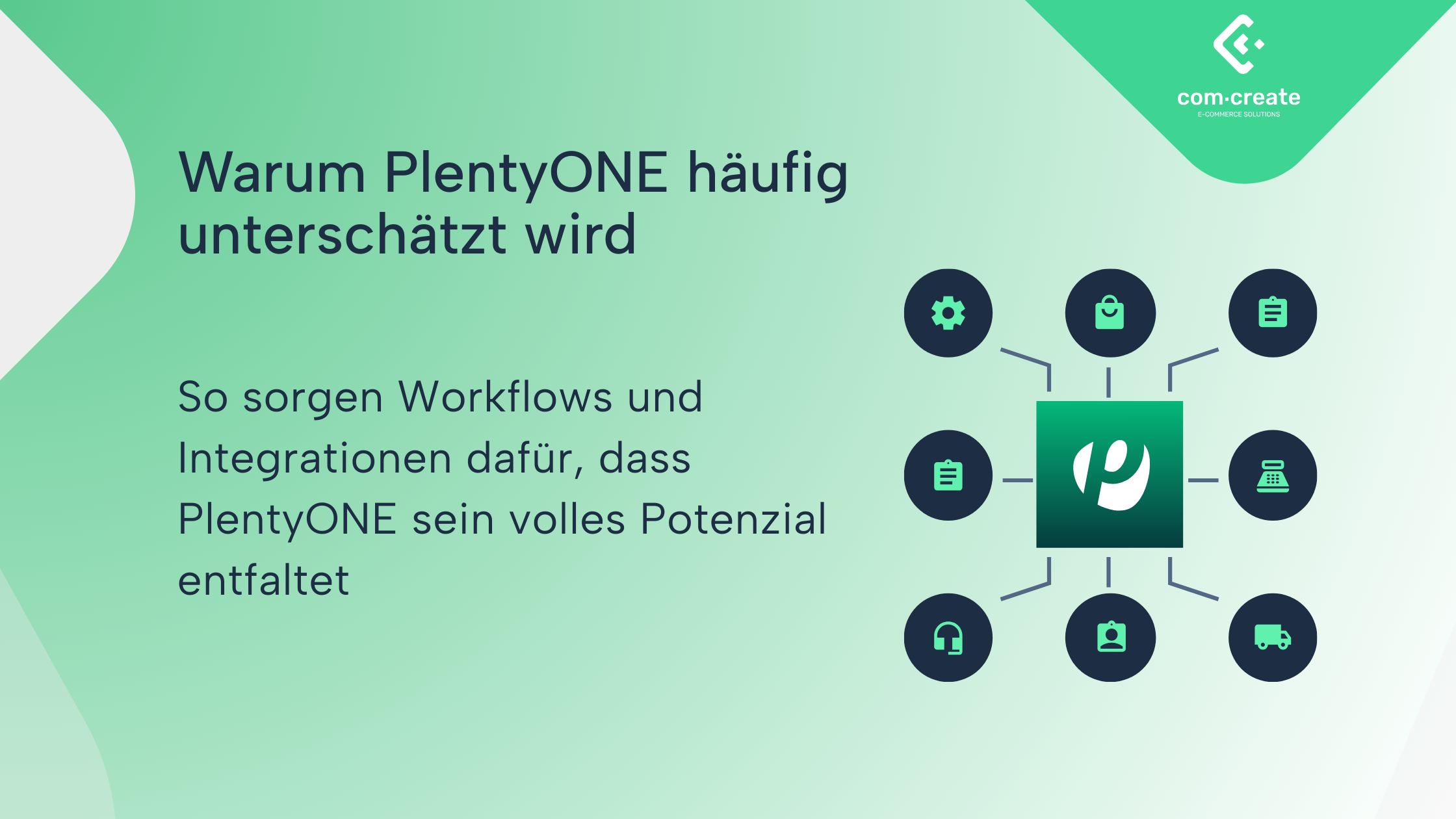
Many e-commerce companies are investing specifically in expanding their marketplace strategy — using specialized systems such as PlentyONE, JTL or Xentral. But practice shows that many of these system landscapes have grown historically, have been set up in an unstructured way and have only been insufficiently configured technically. This not only slows down growth, but also poses significant long-term risks for scalability, data quality and process reliability.
Typical warning signs: When immediate action is needed
In practice, there are recurring patterns that point to structural weaknesses.
Anyone who recognizes the following symptoms in their own system should take action:
Manual or only partially automated processes
Many processes require daily manual intervention — despite available automation functions in the system.
Media breaks and manual intermediate steps
Information must be transferred manually between systems, which leads to errors and delays.
Inconsistent processes and lack of standards
Product data, workflows and rights allocations do not follow a uniform logic — scalability is barely possible.
Unreliable or error-prone interfaces
The exchange of data between systems is unstable, breaks down regularly or transmits incorrect information — with direct effects on processes, orders or invoicing.
Practical example:
An Amazon interface has been technically connected — but there is no operational efficiency. Two employees must go through five manual steps a day to update products and correctly enter orders in the system.
The result: a high expenditure of time, increased incidence of errors and frustration in day-to-day business.
Scaling often fails due to the system base
Many system setups appear functional in the initial phase — especially when processes are bridged with pragmatic solutions. However, with an increasing number of marketplaces, a growing product range or international expansion, not only do the requirements increase, but also the risk of serious errors.
The larger the volume, the greater the damage when processes fail.
Without standardized processes, automated workflows and a clearly structured system architecture, every new platform becomes an operational burden — instead of a lever for growth.
Patchwork costs more than structure in the long term
Attempts are often made to solve acute problems at short notice — through workarounds, additional tools or “quick” adjustments. In doing so, the actual problem is overlooked: The weaknesses are usually deeply rooted in the system. Sustainable operation is only possible through strategic realignment
The recommendation:
Analyze systematically: Where are bottlenecks, manual dependencies or technical weaknesses?
Define goals and requirements: Which processes should be automated, which channels should be connected?
Restructuring the system from scratch: With a clean setup that is designed to scale.
That means effort — in time, resources and budget. But it creates the basis for sustainable growth, fewer dependencies and scalable processes.
Conclusion: Scalability starts with structure
ERP and multichannel solutions such as PlentyONE, Xentral or JTL offer extensive functions — but they only develop their full potential if the configuration is structured, well-thought-out and closely aligned with actual business processes.





